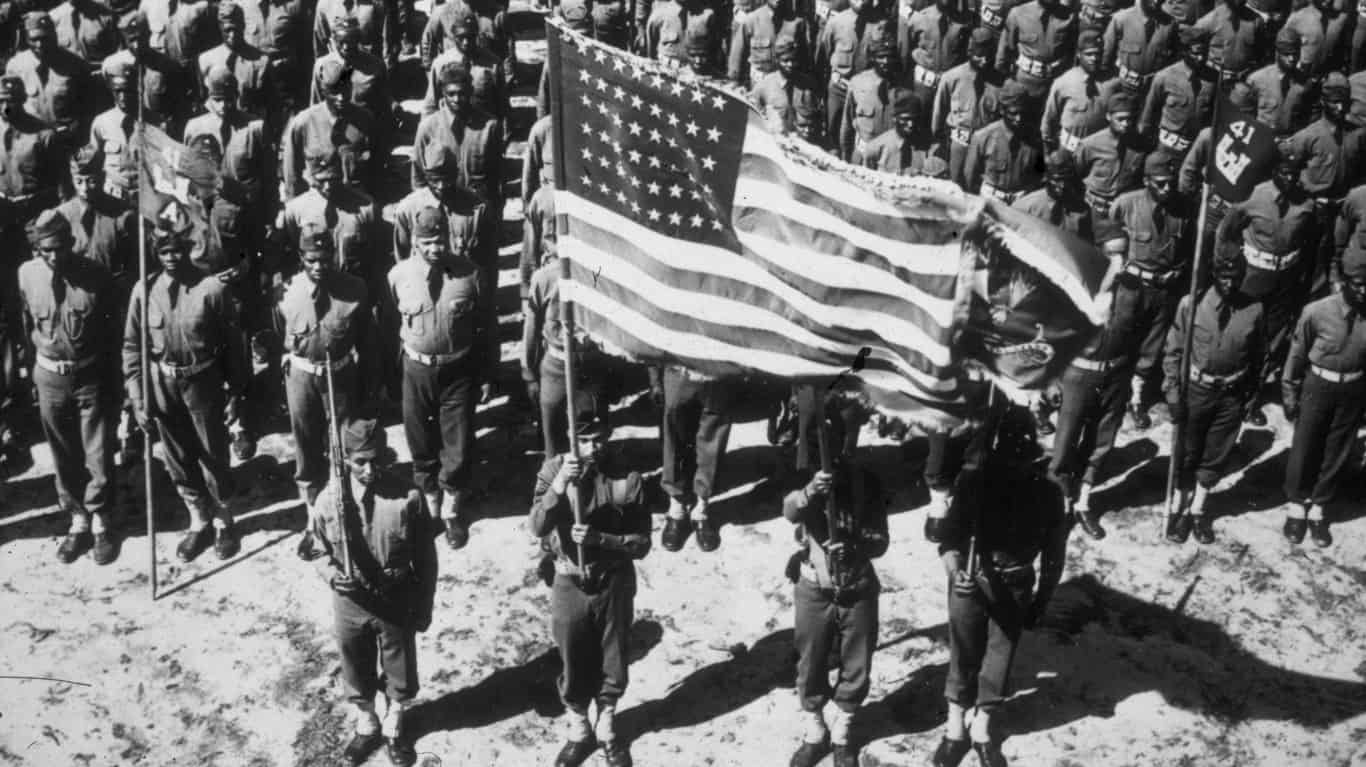



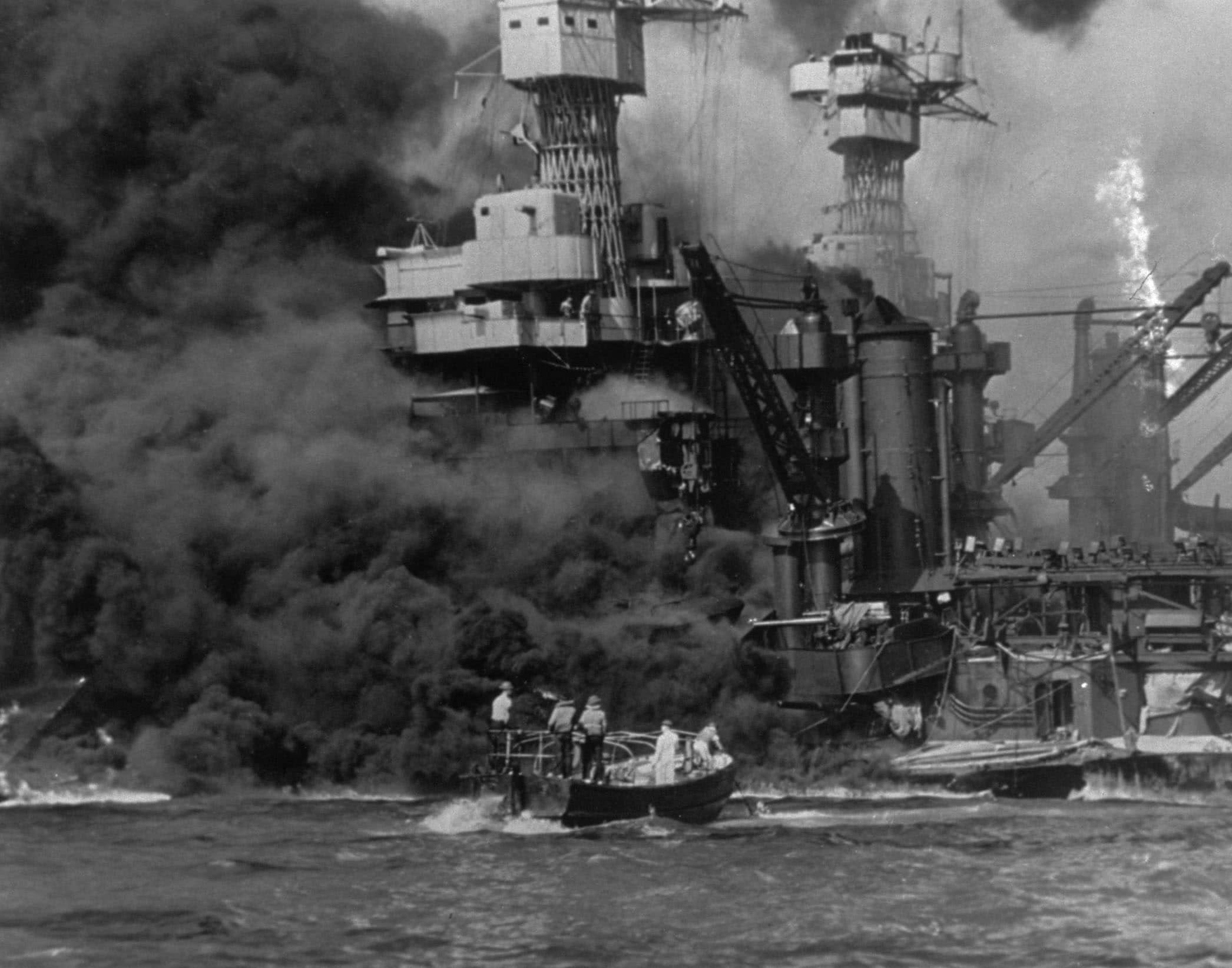

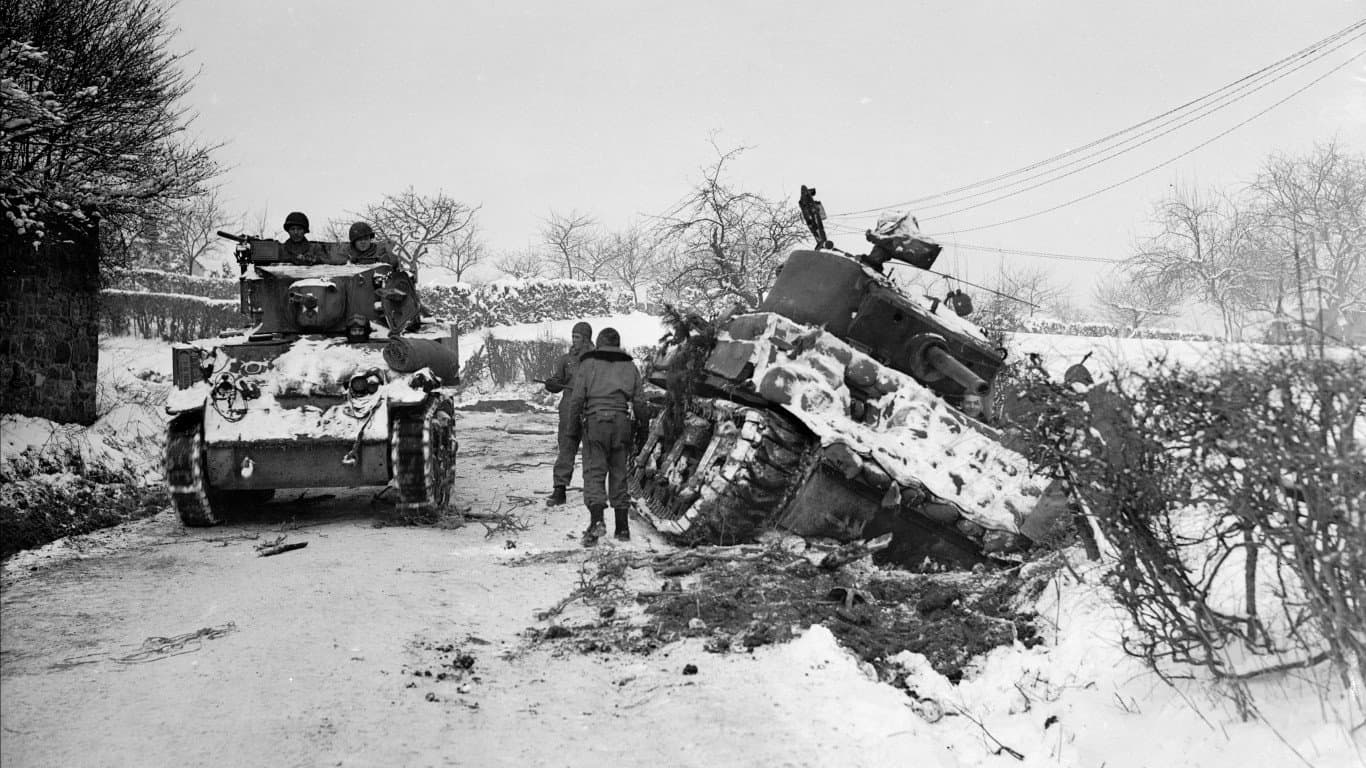


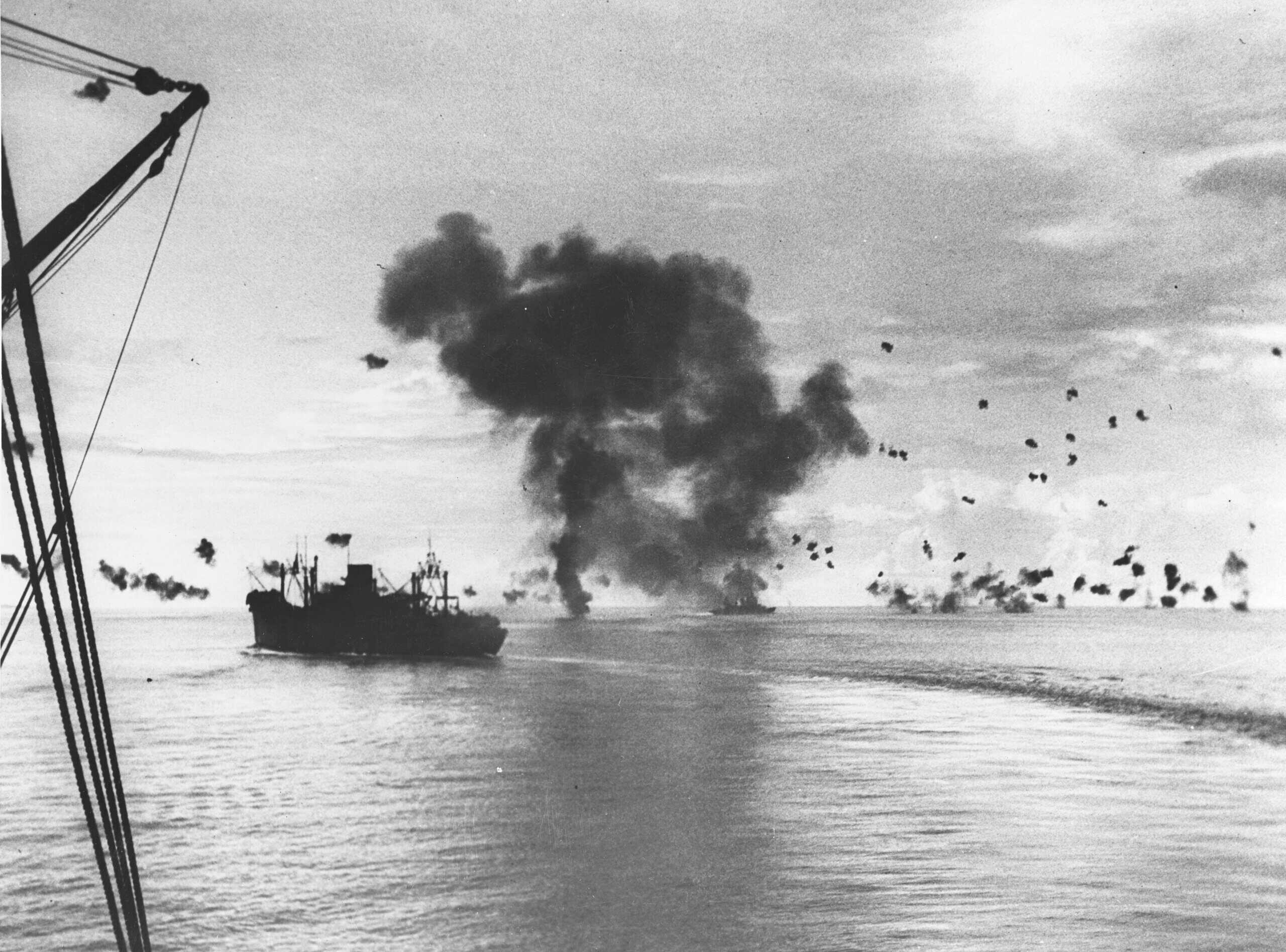




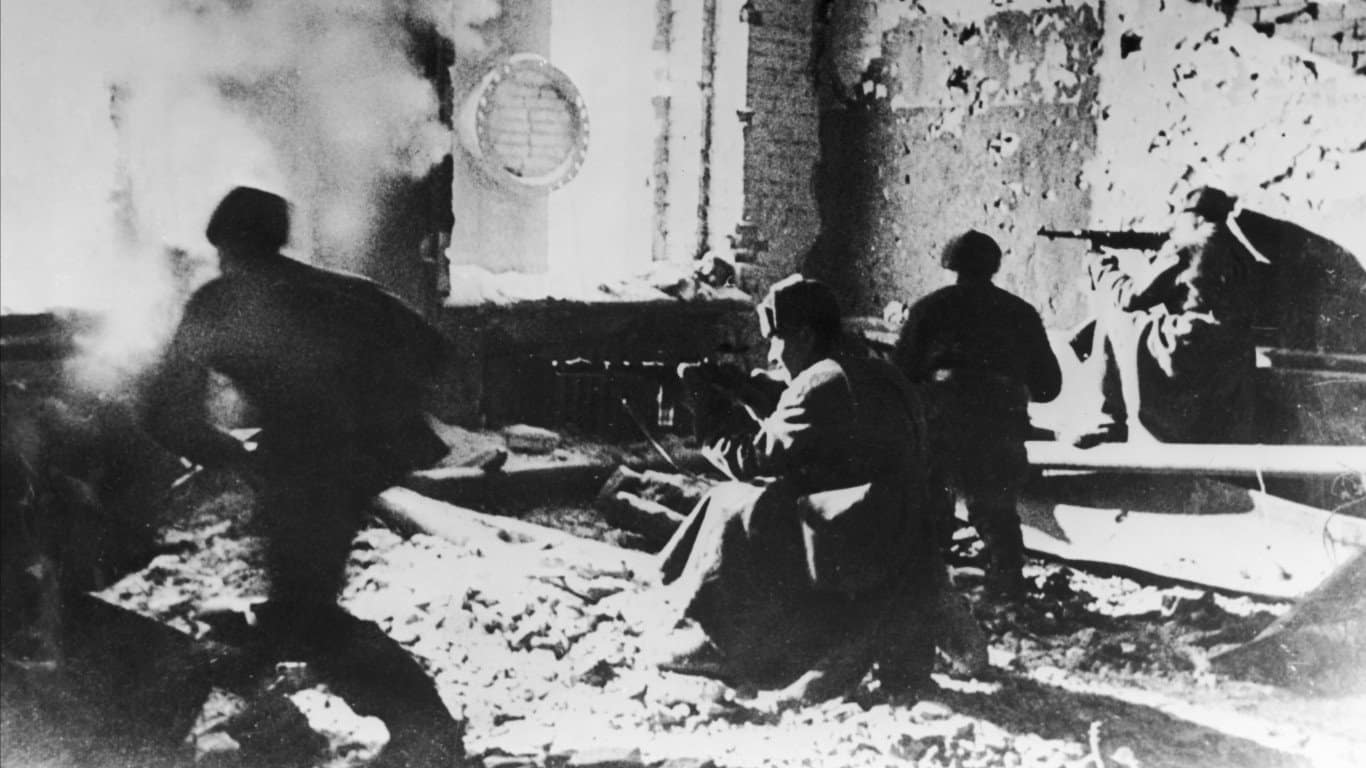
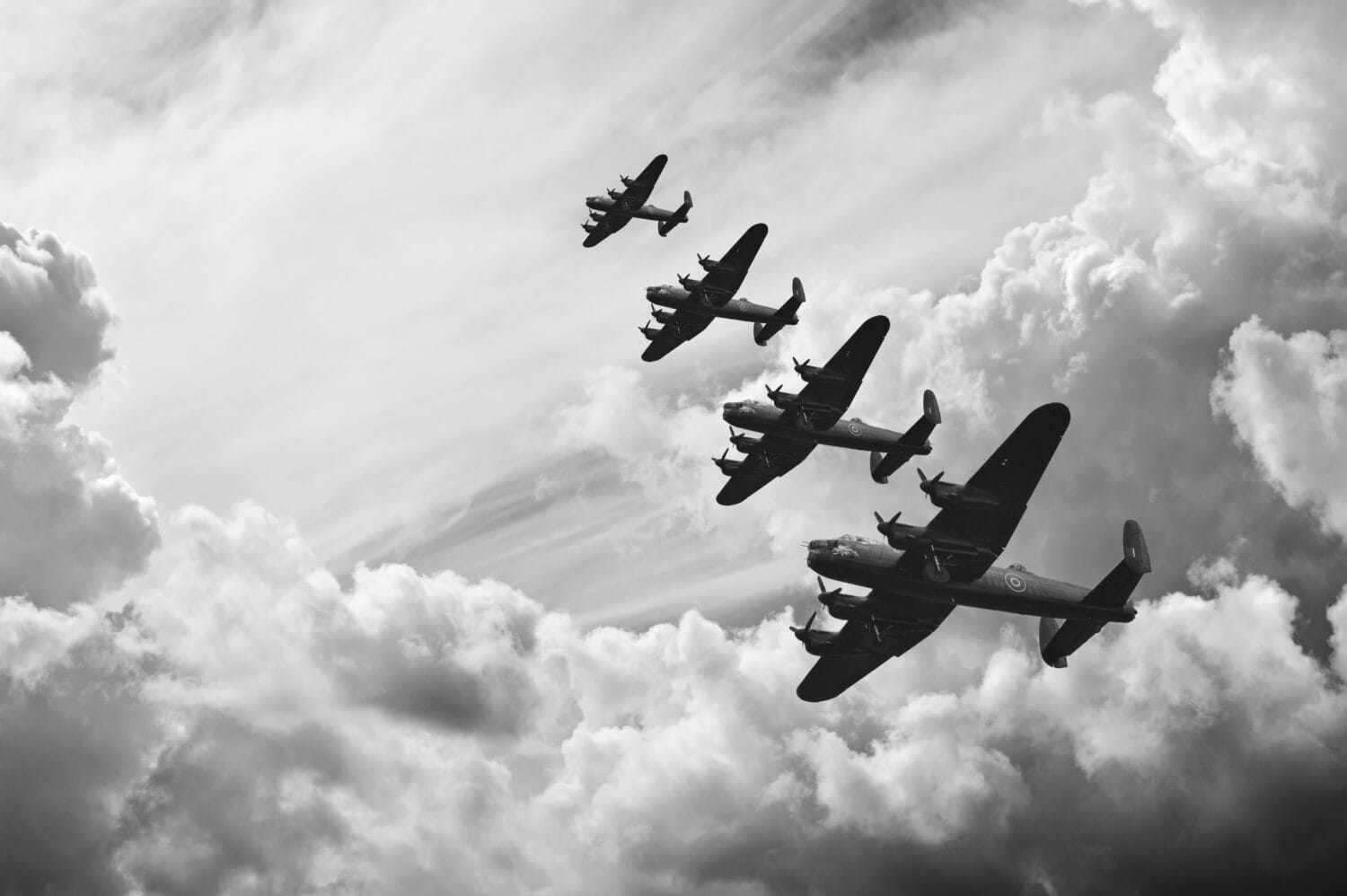
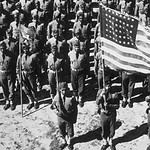
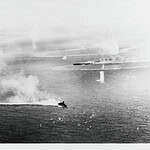







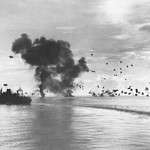
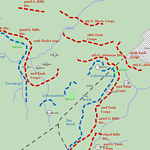


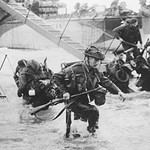
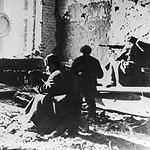

These WWII Battles Disrupted the Course of the War
During World War II, a number of important battles took place that undoubtedly changed the war's course and that of history. Even with thousands of battles taking place between the Allied and Axis powers, a handful stick out due to their influence on the outcome of the war, strategic significance, or, in some horrifying cases, the total number of casualties.
15. Battle of Leyte Gulf
The largest naval battle in history, with over 200,000 sailors and soldiers, the battle between the US, Australia, and Japan would destroy much of Japan’s remaining naval forces. More than 15,000 sailors were killed during the battle. As a result of the fighting, Japan was left to do much of its fighting on land as it could not rebuild its fleet, nor did it have enough oil to power new ships.
14. Operation Husky
A major military campaign, Operation Husky, saw Allied forces invading Sicily, an Island off the coast of Italy. The Allies deceived Germany with false flag attacks to convince them that Sicily was not their next target. By taking the island, the Allies could protect shipping lanes and deliver much-needed supplies, eventually leading to Italy’s surrender and switching sides from the Axis to the Allied cause.
13. Operation Bagration
Two weeks before the Allies launched their D-Day attack, the Soviet Union attacked Germany on the Eastern Front, forcing the Axis powers to fight on two fronts. This battle marked Germany’s most significant defeat of the war, with more than 300,000 German losses against 550,000 for the Soviet Union. In total, the Soviets destroyed 28 Panzer divisions and destroyed Germany’s front line.
12. Pearl Harbor
While less of a battle and more of a surprise attack, the Japanese surprise attack undoubtedly changed the course of the war. The home of the US naval fleet was attacked by Japan on December 7, 1941, leading to the death of more than 2,403 sailors. As a result of this attack, the US declared war on Japan and entered the battle against Germany after initially looking to stay out of the war.
11. Operation Barbarossa
The invasion of the Soviet Union by Germany was undoubtedly a turning point in the war. More than 3.8 million Axis troops invaded the western part of the Soviet Union. This is considered the largest military offensive in world history and was a significant escalation in the conflict, forcing the Soviet Union to join the Allied powers against Germany, resulting in more than 753,000 deaths.
10. Battle of the Bulge
One of the most famous battles of the war, thanks to Hollywood films, the “Ardennes Offensive” as it’s more commonly known, led directly to the death of 8,500 Americans and more than 103,000 Germans.
This was the last major military offensive on the Western Front of the war, lasting from December 1944 to January 1945, and while Germany launched a surprise attack, the “bloodiest single battle” fought by the US in the war quickly turned against Germany, leading to their retreat and eventual surrender.
9. Battle of Berlin
The two-week Berlin battle in April and May 1945 was a Soviet Union victory against the German Army. Serving as the last major military operation of the war, Soviet forces encircled most of the city and leadership, which led directly to the surrender of the German Armed Forces on May 8, 1945. This also marked Germany's division and established the circumstances that directly led to the Cold War. It's believed close to 200,000 troops died during the fighting.
8. Battle of Okinawa
Fought from April to June 1945, the Battle of Okinawa took the lives of over 110,000 sailors and soldiers in one of the fiercest land and sea battles of the war. The largest amphibious assault in the Pacific Theater, the 82-day battle was meant to serve as a launching point for the United States to introduce Operation Downfall, the planned invasion of the Japanese home islands.
7. Battle of Guadalcanal
More than 26,300 troops lost their lives during the Battle of Guadalcanal, which was fought between August 1942 and February 1943. A major campaign in the Pacific, this was one of the first major offensives that the Americans took on against Japan, but the US victory was a significant morale boost, and also gave the Allies additional breathing room to advance closer toward Japan.
6. Battle of Kursk
A major tank engagement between Russia and Germany, the Battle of Kursk remains the largest tank battle in history. Over 8,110 tanks were present at the start of the conflict before reinforcements were brought in as Germany sought to crush the Soviet power structure. More than 232,029 troops were killed during this engagement, but the Soviet victory stopped Germany’s last major offensive in the East.
5. Battle of El Alamein
Taking place in October and November 1942 in Egypt, Allied Forces led by British General Montgomery clashed in a decisive battle that prevented Germany from controlling critical Middle Eastern oil fields. As many as 22,560 souls were lost as the two powers clashed, including over 1,000 tanks, but in the end, Britain prevented Germany from controlling the Suez Canal.
4. Battle of Midway
With over 3,364 sailors lost and nine ships destroyed, the Battle of Midway between the US and Japan was a major turning point in the Pacific Theater. Fought in June 1942, the US considers this battle a turning point in the war against Japan after sinking all four of its remaining aircraft carriers, significantly weakening their capabilities, and shifting the balance of power in the operating area.
3. D-Day
One of the best-known battles of World War II, the D-Day invasion of Normandy, France, marked a turning point in the war as Allied forces began their march toward Berlin. On June 6, 1944, this is remembered as one of military history's most significant engagements and invasions. It’s believed that as many as 19,000 died in one day, though the number varies based on sources.
2. Battle of Stalingrad
With as many as 2.8 million casualties sustained by Germany, Russia, Italy, Romania, and Hungary, there is no question that the Battle of Stalingrad was one of the deadliest of the war. Brutal urban warfare marked this engagement between the two powers. Germany’s loss was a definitive turning point on the Eastern Front and a significant blow to Germany.
1. Battle of Britain
The Battle of Britain, which took place above the skies of London between June and October 1940, was a major military campaign, one of the first fought entirely by two air forces. The Royal Air Force's defense of Britain was successful, but had it not worked out as it did, Germany would have invaded England and likely changed the course and outcome of the Second World War. Both sides sustained over 4,427 casualties, on top of the 4,513 airplanes that were lost.
